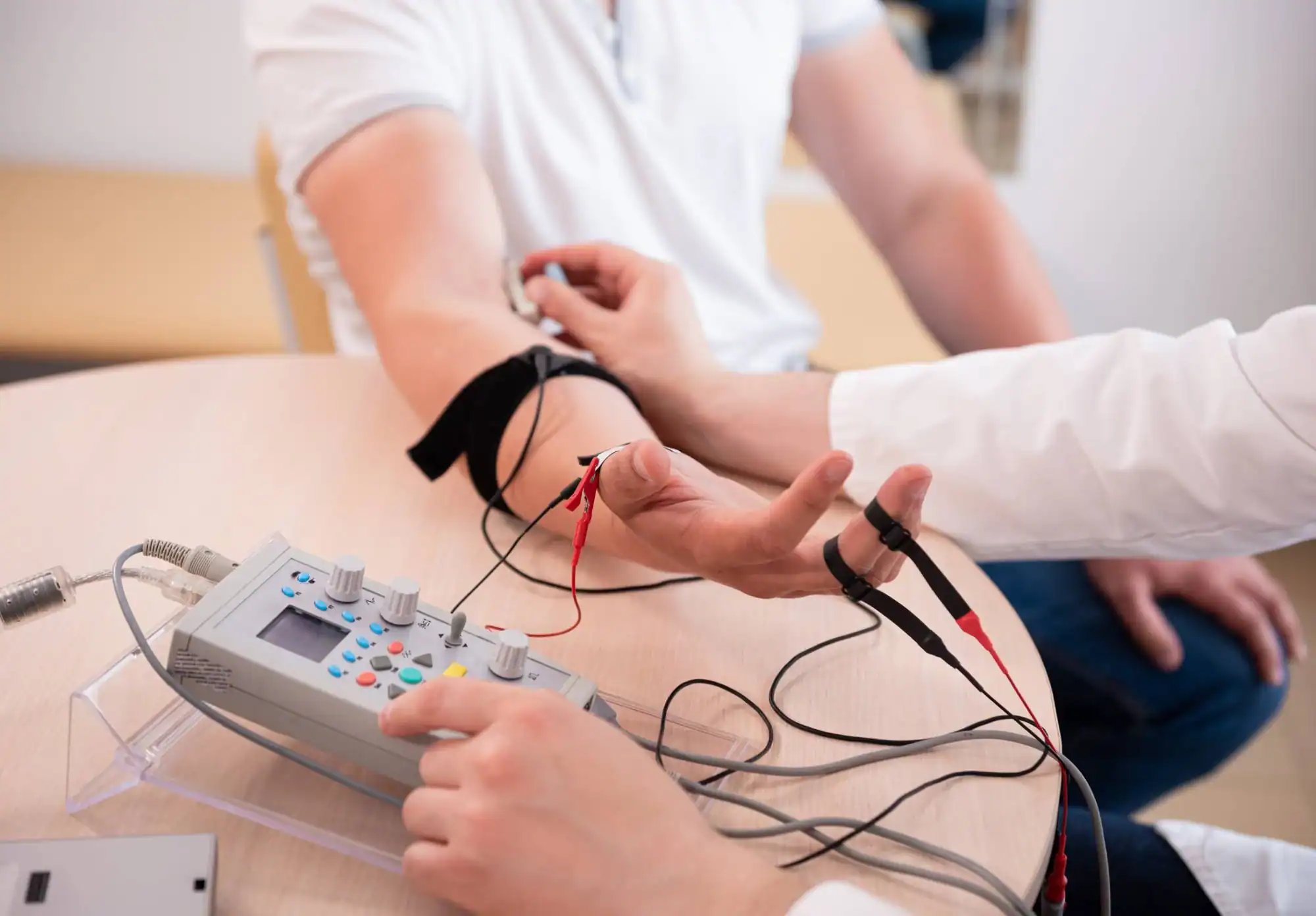Advanced electromyography testing that pinpoints exactly what’s causing your symptoms so you can finally move forward with the right treatment.
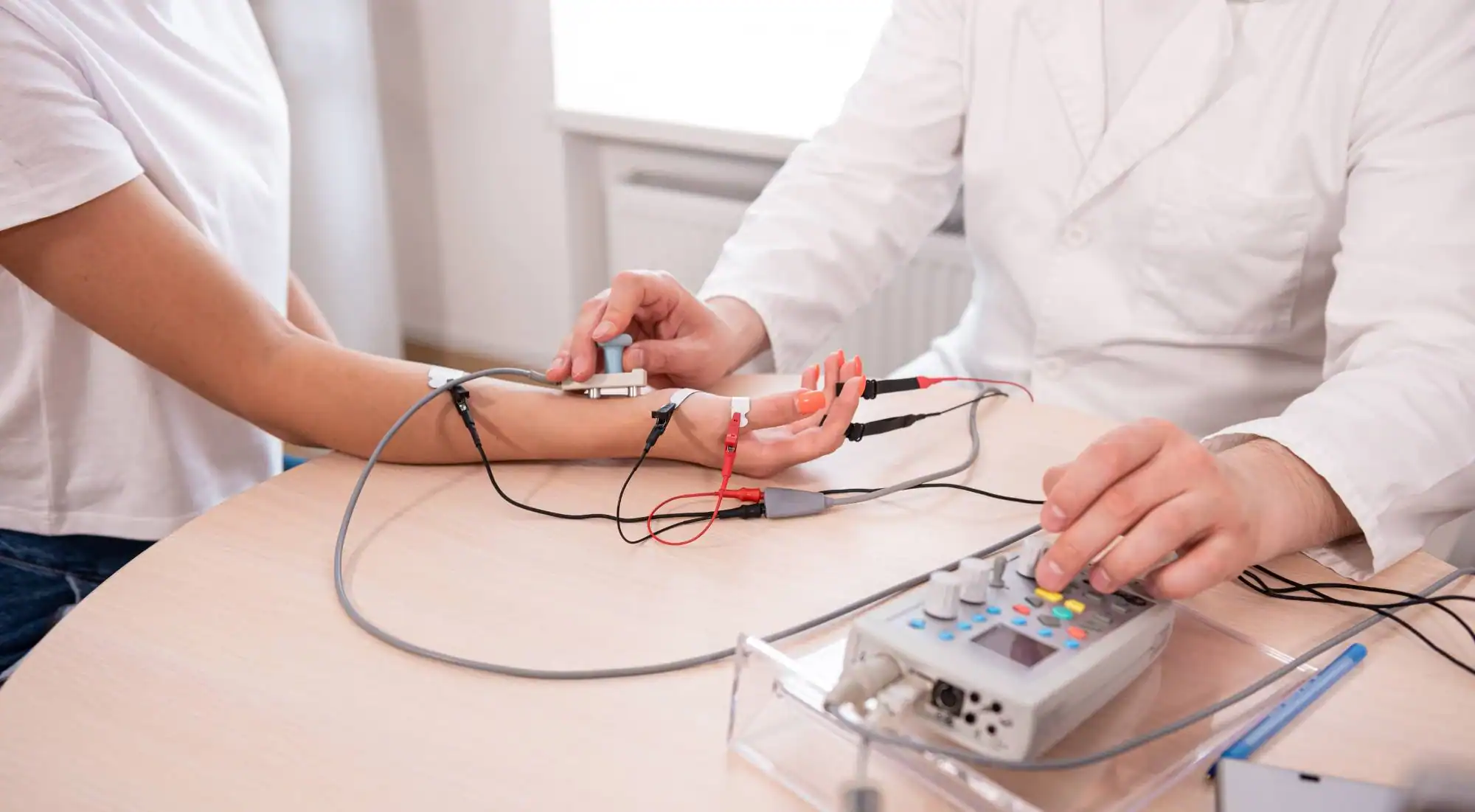
Reviews
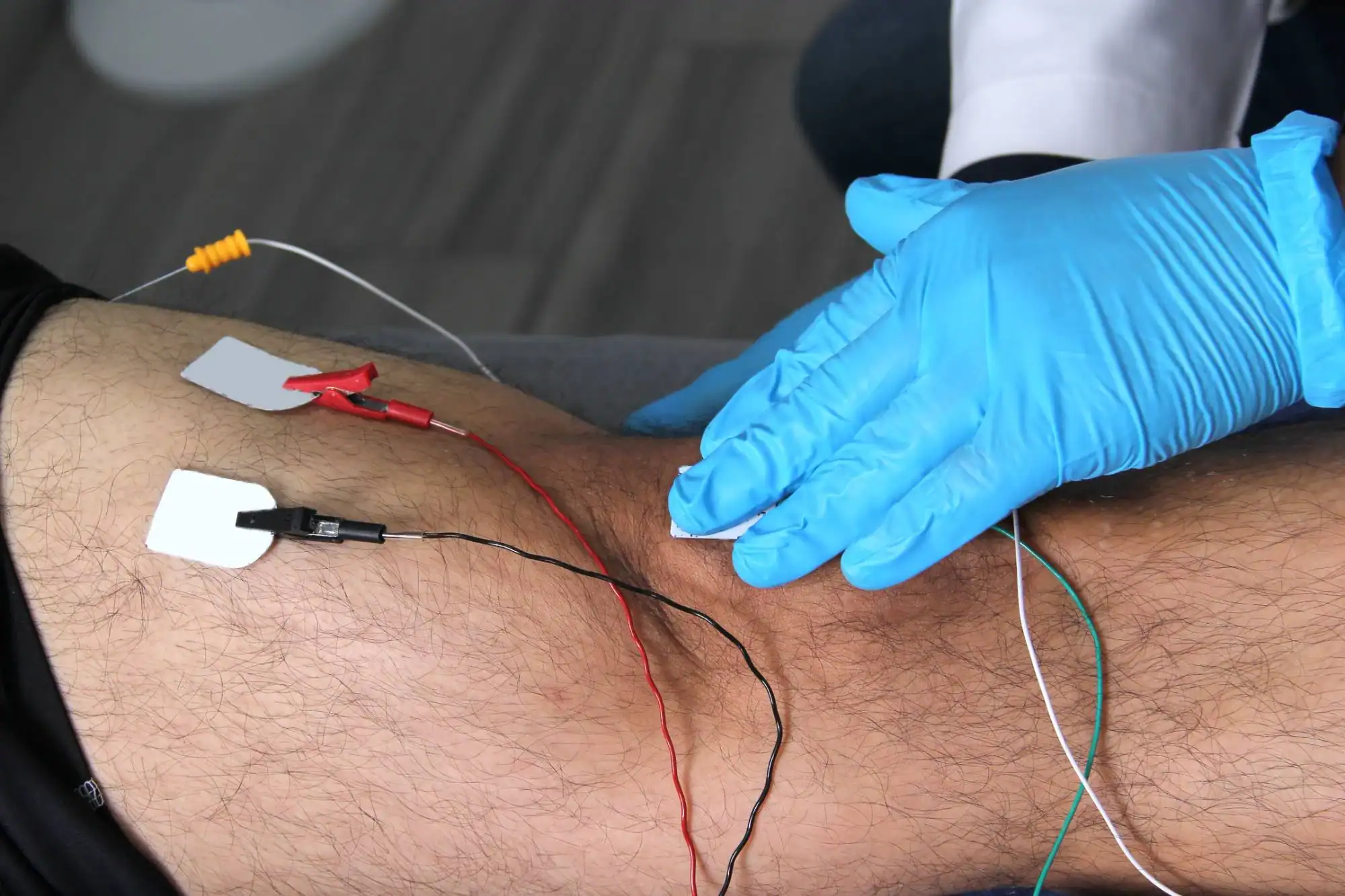
You’ve been dealing with nerve pain, muscle weakness, or that pins-and-needles feeling for months. Maybe your primary doctor isn’t sure what’s going on, or previous tests came back inconclusive.
EMG testing changes that. This diagnostic procedure measures the electrical activity in your muscles and nerves, giving us a clear picture of what’s actually happening in your body. No more guessing. No more “let’s try this and see what happens.”
When you know exactly what condition you’re facing, you can make informed decisions about treatment. You’ll understand why certain movements hurt, what’s causing the weakness, and most importantly, what steps will actually help you feel better.
NY Spine Medicine has been serving the Rockaway Park community and surrounding Queens areas with comprehensive spine and pain management care. Our team includes board-certified physicians who specialize in diagnosing and treating complex nerve and muscle conditions.
What sets our practice apart is our integrated approach to care. Your EMG testing isn’t just a standalone procedure – it’s part of a comprehensive evaluation that considers your complete medical history, symptoms, and treatment goals.
We use state-of-the-art diagnostic equipment and follow evidence-based protocols to ensure accurate results. Most importantly, you’ll work with specialists who take the time to explain your condition and discuss realistic treatment options based on your specific test results.
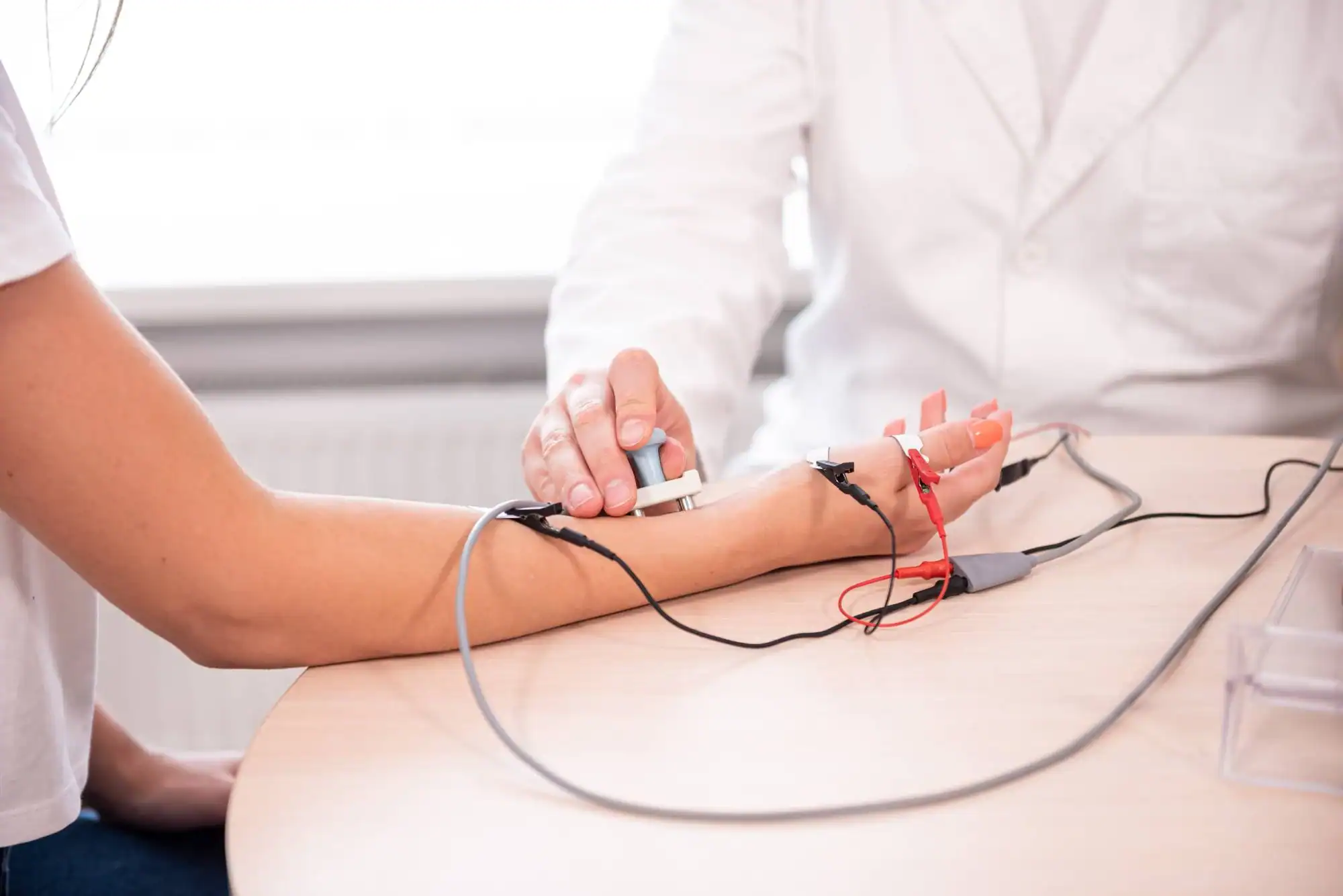
Your EMG test typically combines two parts: nerve conduction studies and electromyography. The nerve conduction portion comes first, where small electrodes are placed on your skin to measure how well electrical signals travel through your nerves.
Next, the electromyography portion uses a thin needle electrode to measure electrical activity directly in your muscles. You’ll be asked to relax certain muscles, then contract them gently. The entire process usually takes 30-60 minutes depending on which areas need testing.
Most patients find the test more tolerable than expected. You might feel some discomfort during the needle portion, but it’s brief and manageable. The results are available immediately, so you’ll leave with a clear understanding of what the test revealed and what your next steps should be.
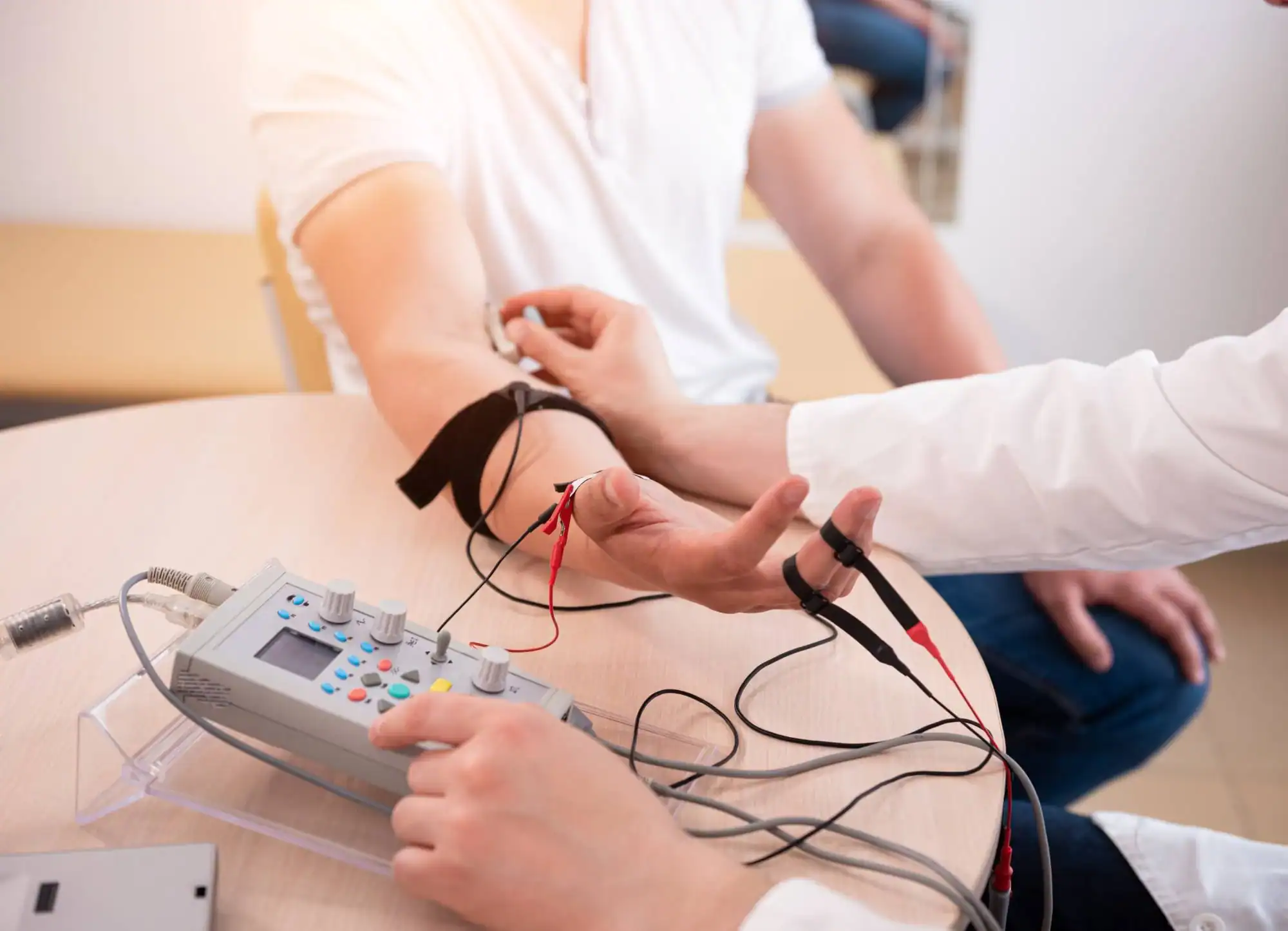
Ready to get started?
Your EMG testing appointment includes a thorough consultation before the procedure begins. Our physician will review your symptoms, medical history, and any previous test results to ensure the EMG is tailored to your specific concerns.
The testing itself covers both nerve conduction studies and muscle testing as needed. Common areas we evaluate include arms, legs, hands, feet, and back – wherever your symptoms are occurring. The equipment we use meets the highest medical standards for accuracy and patient comfort.
After testing, you’ll receive immediate results interpretation and discussion of findings. This isn’t just a report sent to another doctor – you’ll understand what the test showed, what it means for your condition, and what treatment options make sense based on these specific results. Insurance handling and referral coordination are managed by our office to streamline your care.
